Even for people who don't much care for the work itself, spring cleaning has a certain appeal: after a long winter it's not just your house that feels a bit too "lived in," it's your brain as well. That same urge to make everything fresh and new applies to your outdoor living spaces too, and gardening is a lot more appealing than housework. When it's time to get spring cleaning underway in your yard and garden, start with these five priorities.
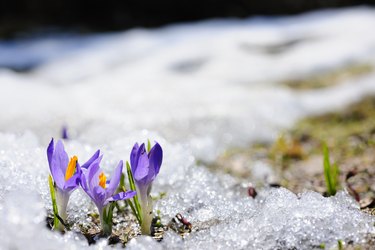
Video of the Day
1) Maintain Your Equipment
Your first step should be spring maintenance of the tools and equipment you'll need in order to do everything else. Service the motors and carburetors of everything gas-powered and top them up with fresh oil and gas; locate the chargers and check the batteries for everything cordless; and untangle and organize the extension cords for anything electric.
Video of the Day
Make sure you have a spool of fresh line for your string trimmer. Remove the blades from your mower, clean and sharpen them, and put them back. Clean, sharpen and oil the blades of your garden shovels and hand tools, and rub any wooden handles with mineral oil to preserve and protect them. Sharpen your pruning shears and saws as well, and disinfect the blades with rubbing alcohol. Discard battered and worn-out gardening gloves or knee pads, and buy new ones. All of this takes time, but it'll make your work easier all summer long.
Read More: How to Remove a Stuck Lawnmower Blade

2) Clean Your Deck or Patio, and Its Furniture
Your deck or patio is the place where your indoor and outdoor lives overlap, which makes both a high traffic area and a high priority for cleaning. Start by giving it a good once-over while it's still in "winter mode": check for any winter damage or rot that needs repairing, then pressure-wash it if it's dirty, and re-seal or repaint as needed.
Do the same with your patio furniture when you bring it out or uncover it. Wood furniture may need to be stained, sealed or painted; plastic furniture can be scrubbed with specialized cleaners (or sometimes pressure-washed as well), and metal furniture should be checked for rust. Plastic furniture and rusted metal furniture can be touched up with specialized paints. Finally, clean your gas or charcoal grill thoroughly with a good cleaner-degreaser, rinse it thoroughly, oil the grates, and buy a new set of barbecue accessories if the old ones are showing their age.
Read More: How to Repair Rusted Patio Furniture
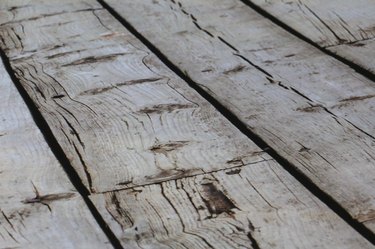
3) Pruning Shrubs, Hedges and Trees (Selectively)
Your shrubs, hedges and trees will generally require a little bit of TLC after the long winter. Your first step should always be removing any broken or storm-damaged limbs or canes, because those have to go in any case. If the damage is severe, or if any of your shrubs, bushes or hedge plants have been outright killed by the winter, you might need to dig up the old one and replace it.
Late winter and early spring are also a good time to prune for other reasons, including esthetics (to maintain your desired shape or growth habit, or encourage blooming) and practicality (to improve airflow and reduce the risk of disease). That being said, don't start cutting until you've checked the requirements for each shrub. Many spring-flowering ornamentals – forsythia, azalea, lilacs, wisteria – blossom on last year's growth, so pruning them now steals their blossoms. Summer-flowering bushes, including roses, spiraeas and smooth hydrangeas, blossom on this year's new growth. Giving those a good "haircut" in early spring will make them blossom more prolifically.
Read More: How to Sharpen a Pruning Saw
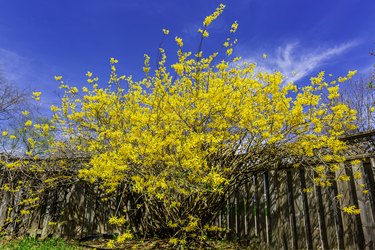
4) Divide and Transplant your Perennials
Smart gardeners make heavy use of perennials in their flower and herb beds, because once they're established they need very little care from year to year. That doesn't mean no care, of course, and most perennials benefit from being divided every three or four years. It keeps them happy, healthy and productive, and – as a bonus – gives you more plants you can use to enlarge your beds, create new ones, or gift to friends and family.
Early spring is the best time to divide perennials, as soon as the soil can be worked. For most of the common perennials, including flowers and ornamentals (aster, daylily, hostas, phlox, black-eyed Susan, echinacea) and culinary herbs (thyme, oregano, chives) it's a simple matter of cutting into the clumps of perennials with a shovel and then separating them gently and replanting, some in the old spot and some in the new. It's a good opportunity to add a bit of aged compost or other soil amendments, as needed.
There are a few that need different treatment, so don't dig in until you've done your research. Bearded irises are best transplanted in late summer, for example, and a few other favorites such as bleeding heart, lavender and oriental poppies do better when they aren't divided regularly.
Read More: Fast-Spreading Perennials
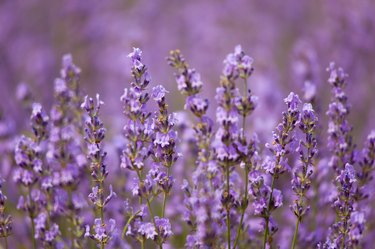
5) Do the Early "Weed Patrol"
Early spring is a useful time to literally nip weeds in the bud. Getting them now, before they're well-established, can make life a lot simpler for the rest of the season. In your garden beds, now's a good time to hand-pull any new baby weeds you see springing up. In the lawn, this is the time when many people apply a pre-emergent herbicide to suppress weeds.
If you've re-seeded worn areas of the lawn in winter, or plan to in early spring, hold off on the herbicide because it will also kill your new grass. In that case, wait for weeds like plantain to pop up and then kill them selectively with a post-emergent herbicide or (better yet) just dig them out manually with the appropriate tool.
One exception to be aware of is dandelions and other early wildflowers, which provide a vital spring food supply for many pollinators. Unless you're compelled by a local bylaw or HOA rules, leave them a few days to blossom and feed the insects before you pull them (and don't spray them, because you'll kill the pollinators).
Read More: List of Pre-Emergent Herbicides
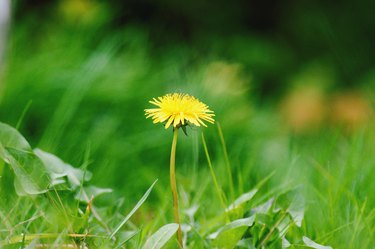
A Few Tasks to Postpone
It's absolutely natural for enthusiasts to want to jump into the gardening with both feet, once spring arrives, but there are a few things you might want to defer for a few weeks.
- Debris cleanup: One of the most common "first thing" suggestions is to remove any old, standing stems from your garden beds and perennials, and to clean up any leaves or plant debris left from the winter. That absolutely needs to be done, but you should wait a few weeks until the weather warms. That organic litter provides shelter to a wide range of beneficial insects, and other creatures that make up a healthy ecosystem.
- Premature lawn work: Early spring is a good time to remove thatch from your lawn, but wait until the soil dries up a bit. Walking on it too early, while the soil is still wet, causes compaction and poor growth. Hold off on that first mowing for a few weeks, for the same reason. Also, don't fertilize too early (it encourages weed growth).
- Bringing on the mulch: Covering vegetable beds in mulch helps suppress weeds and retain moisture, and mulching flowerbeds does the same but adds to its esthetics as well. The issue is that if it's applied too early in the spring, that same mulch can slow the warming of the soil (which in turn slows germination) and trap excess moisture (which can cause rot and other issues). It's still a good idea, but wait until the soil is warm and has dried enough to be worked.
